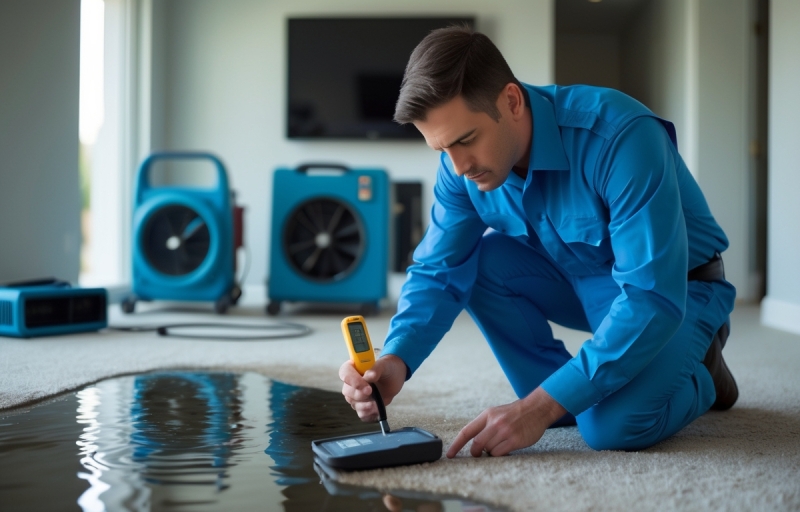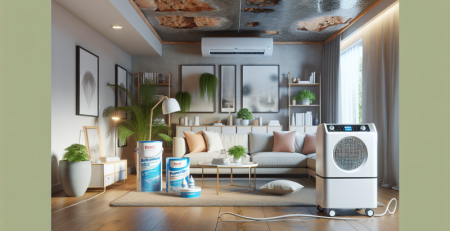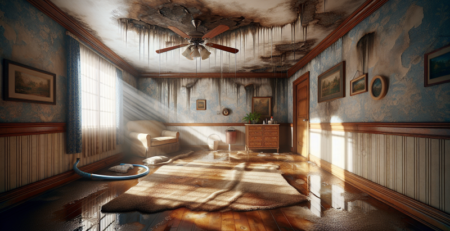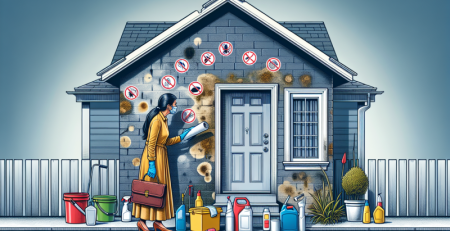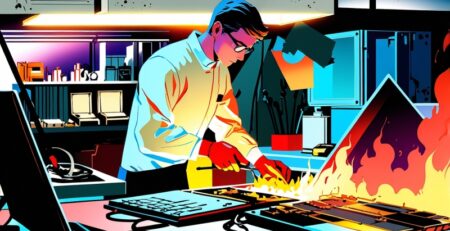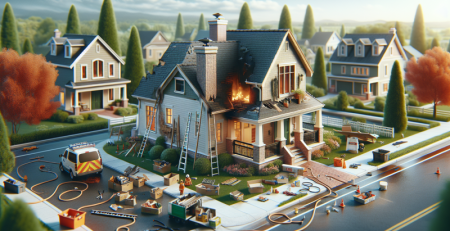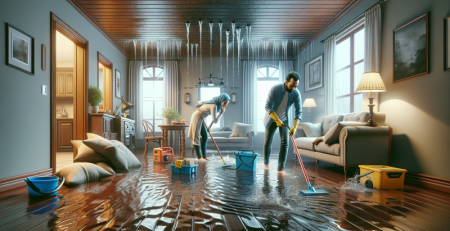Water Damage: How to Prevent Mold in Your Carpets
Water damage can quickly turn into a serious issue for homeowners, especially when it comes to carpets. When moisture seeps into your flooring, it creates the perfect environment for mold growth—posing health risks and causing long-term damage to your home. Preventing mold in your carpets after water damage is essential to maintaining a clean, safe living space. At Kraus Restoration, NJ’s leaders in water, mold, and fire damage restoration, we understand how urgent and stressful these situations can be. That’s why we offer 24/7 emergency services, rapid response times, and IICRC-certified experts to help protect your home. Whether you’re dealing with a burst pipe, flooding, or a leaking appliance, our team is ready to serve Central and Northern NJ with professional water damage restoration and mold prevention solutions. Call us anytime at (973) 886-2021 to get expert help when you need it most.
Understanding the Link Between Water Damage and Mold Growth
Water damage is one of the leading causes of mold growth in carpets, and understanding this connection is crucial for maintaining a healthy indoor environment. When carpets become wet due to flooding, leaks, or high humidity, they create the perfect breeding ground for mold spores. Mold can begin to grow within 24 to 48 hours of water exposure, especially in dark, poorly ventilated areas.
According to the Environmental Protection Agency (EPA), “mold thrives in moist environments and can cause serious health issues, including respiratory problems, allergic reactions, and asthma attacks.” This makes it essential to address water damage promptly and thoroughly to prevent mold from taking hold.
“Even small amounts of moisture trapped in carpet fibers or padding can lead to significant mold growth if not properly dried and treated.”
To better understand how water damage leads to mold, consider the following scenarios:
- Flooding from broken pipes or heavy rain saturates carpets and padding.
- Leaks from appliances or plumbing go unnoticed under carpets.
- High indoor humidity levels cause condensation and dampness in carpeted areas.
Preventing mold starts with immediate action. Professional water cleanup services can help extract moisture and dry affected areas efficiently. If mold is already present, specialized mold cleanup is necessary to ensure safe removal and prevent recurrence.
For more information about our restoration solutions, visit our services page or explore our recent residential design projects to see how we’ve helped others recover from water damage.
Immediate Steps to Take After Water Exposure
When your carpet is exposed to water, acting quickly is essential to prevent mold growth and further damage. The first step is to remove any standing water using a wet vacuum or absorbent towels. Promptly drying the area is critical—open windows, use fans, and consider a dehumidifier to reduce moisture levels. Avoid walking on the wet carpet to prevent spreading contaminants and damaging the carpet fibers.
Next, inspect the carpet padding. In many cases, the padding must be removed and replaced, as it retains moisture and can become a breeding ground for mold. If the water damage is extensive or caused by contaminated sources like sewage, it’s best to seek professional help. Our expert water cleanup team can assess the situation and provide thorough restoration services.
Additionally, clean and disinfect the affected area to eliminate bacteria and prevent mold spores from developing. If mold has already started to form, immediate mold cleanup is necessary to protect your health and home.
For more information about our restoration process and how we can help, visit our about page. Acting swiftly and efficiently can make all the difference in preserving your carpet and maintaining a healthy indoor environment.
Proper Drying Techniques for Wet Carpets
Thoroughly drying wet carpets is essential to prevent mold growth and maintain a healthy indoor environment after water damage. The first step is to remove as much water as possible using a wet vacuum or extraction equipment. Once the excess moisture is eliminated, increase airflow by opening windows and using high-powered fans or air movers. Dehumidifiers are also crucial, as they help reduce humidity levels and speed up the drying process.
It’s important to lift the carpet and remove the padding if it’s soaked, as padding retains moisture and can become a breeding ground for mold. If the damage is extensive, consider professional water cleanup services to ensure all affected areas are properly treated. Time is critical—carpets should be dried within 24 to 48 hours to minimize the risk of mold.
Monitoring moisture levels with a moisture meter can help determine when the carpet is completely dry. If you notice any musty odors or discoloration, it may be necessary to consult experts in mold cleanup to assess and remediate the issue.
For more information about our restoration process and how we handle water damage, visit our about page or explore our past residential design projects. Taking prompt action and using the right drying techniques can save your carpets and protect your home from long-term damage.
Tools and Equipment to Help Prevent Mold
To effectively prevent mold growth in your carpets after water damage, using the right tools and equipment is essential. High-powered wet vacuums are one of the first tools to consider, as they efficiently extract excess water from carpet fibers. Dehumidifiers play a crucial role as well, reducing moisture levels in the air and speeding up the drying process. Air movers or industrial fans help circulate air, promoting faster evaporation and preventing mold spores from settling.
Moisture meters are another valuable tool, allowing you to monitor dampness levels in carpets and subfloors to ensure complete dryness. In some cases, professional-grade carpet steam cleaners can be used to sanitize and remove any lingering bacteria or mold spores. For more severe water damage, it’s advisable to seek professional water cleanup services to ensure thorough drying and mold prevention.
Using these tools not only helps in immediate water removal but also supports long-term carpet health. If mold has already started to develop, specialized mold cleanup equipment may be necessary to safely eliminate it and prevent recurrence. Investing in the right tools or hiring experienced professionals can save you from costly repairs and health risks in the future. For more information about our expertise and how we can help, visit our about page.
Signs of Mold Growth You Shouldn’t Ignore
Mold growth in carpets is a serious issue that can develop quickly after water damage, often going unnoticed until it becomes a health hazard. One of the earliest signs is a persistent musty odor, even after cleaning. This smell is a strong indicator that mold spores are present and thriving beneath the surface. Discoloration or dark spots on your carpet, especially in areas that have been exposed to moisture, are also red flags. These patches may appear green, black, or white and can spread rapidly if not addressed.
Another warning sign is increased allergy symptoms such as sneezing, coughing, or skin irritation when spending time near the affected area. Mold can trigger respiratory issues, particularly in individuals with asthma or weakened immune systems. If your carpet feels damp or has a sticky texture long after a spill or flood, it’s time to investigate further.
To prevent mold from spreading, it’s crucial to act quickly. Professional help from a trusted restoration company can make all the difference. Learn more about our specialized mold cleanup and water cleanup services designed to protect your home and health. For more information about our team and expertise, visit our about page or check out our recent residential design projects to see how we’ve helped others recover from water damage.
When to Call a Professional for Help
If you’ve experienced significant water damage in your home, it’s essential to know when it’s time to bring in a professional. While minor spills or dampness can often be managed with household tools and quick action, larger-scale flooding or persistent moisture issues require expert attention. Signs that you need professional help include a musty odor that lingers despite cleaning, visible mold growth, or water that has soaked deep into the carpet padding and subfloor. These conditions can lead to serious health risks and structural damage if not addressed promptly.
Professional restoration teams have the tools and expertise to thoroughly extract water, dry affected areas, and prevent mold from forming. They also use specialized equipment to detect hidden moisture that DIY methods might miss. If you’re unsure about the extent of the damage, it’s always safer to consult with experts who can assess the situation accurately.
At Kraus Restoration, our experienced team offers comprehensive services to handle water and mold issues efficiently. Whether you’re dealing with a minor leak or a major flood, we’re equipped to restore your home to its original condition. Explore our past residential design projects to see how we’ve helped homeowners recover from water damage. Don’t wait until the problem worsens—reach out to professionals to protect your home and health.
Long-Term Carpet Maintenance Tips to Avoid Mold
To keep your carpets mold-free in the long run, consistent maintenance is essential. Mold thrives in damp, dark environments, making carpets particularly vulnerable after water exposure. Regular vacuuming helps remove dirt and moisture-trapping debris, while using a dehumidifier can reduce indoor humidity levels, discouraging mold growth. It’s also important to address spills and leaks immediately—blotting moisture and thoroughly drying the area can prevent mold from taking hold.
Professional cleaning every 12 to 18 months is highly recommended, especially in high-traffic or moisture-prone areas. This deep cleaning removes embedded contaminants and ensures your carpet remains hygienic. If your home has experienced flooding or water damage, consider scheduling a water cleanup service to ensure all moisture is properly extracted.
Installing moisture barriers or using mold-resistant carpet padding can also be effective preventive measures. Additionally, rearranging furniture periodically allows airflow and prevents moisture from getting trapped underneath. If you suspect mold has already developed, don’t delay—seek professional mold cleanup services to mitigate health risks and structural damage.
For more information about our restoration solutions and how we can help protect your home, visit our about page or explore our full range of services. Taking proactive steps today can save you from costly repairs and health hazards in the future.
In conclusion, preventing mold in your carpets after water damage is crucial for maintaining a healthy and safe home environment. By acting quickly, thoroughly drying affected areas, using proper ventilation, and considering professional cleaning when necessary, you can significantly reduce the risk of mold growth. Regular inspections and proactive maintenance also go a long way in protecting your carpets from future water-related issues. Remember, the key to mold prevention is prompt action and consistent care—your health and home depend on it.
